dark sidius
ACCESS: Top Secret
- Joined
- 1 August 2008
- Messages
- 1,196
- Reaction score
- 1,069
Not gonna lie, I'm not a big fan of how that would look like:Off paywall now
YF-23 Designer Offers His Take On Boeing’s F-47 NGAD Configuration | Aviation Week Network
Renowned aircraft designer Darold Cummings explores questions raised by Boeing’s F-47 NGAD design.aviationweek.com
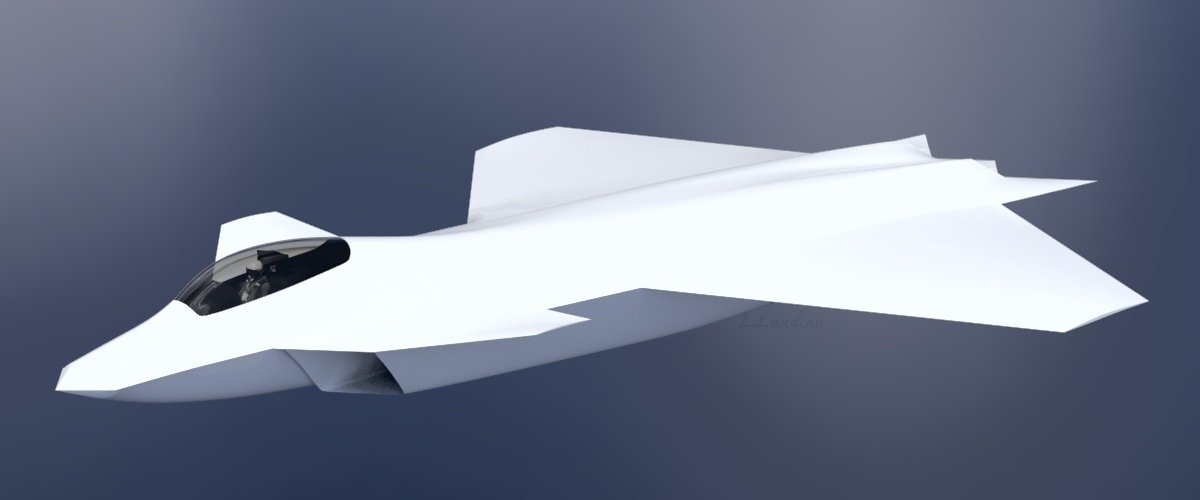
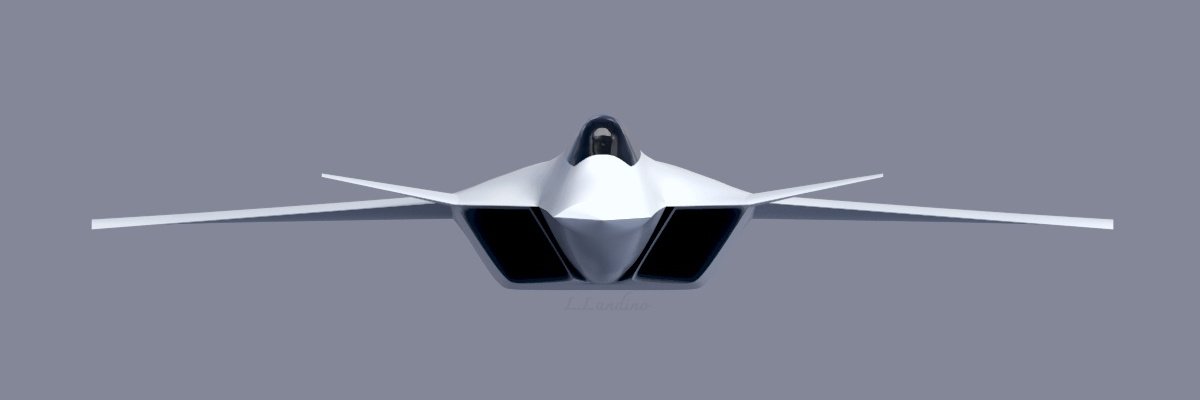
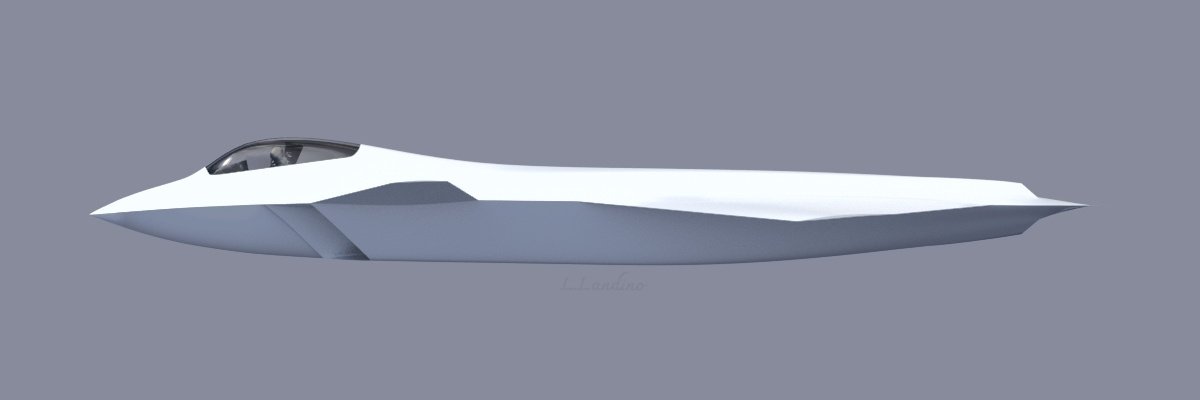

Thank you for the CGI, but I don't like how that looks, either!Not gonna lie, I'm not a big fan of how that would look like:
Bro same, for some reason, recent US design look ugly as f.Not gonna lie, I'm not a big fan of how that would look like:
Not gonna lie, I'm not a big fan of how that would look like:
Try giving it the longer nose that's on the hand-drawn sketch. I think that the nose looking so stubby really takes away from it.Not gonna lie, I'm not a big fan of how that would look like:
View attachment 767438
View attachment 767439
View attachment 767440
View attachment 767441
Black Sabre NGAD is an interesting choice of name though, considering one of his previous works was named Deep Sabre.
Not gonna lie, I'm not a big fan of how that would look like:
View attachment 767438
View attachment 767439
View attachment 767440
View attachment 767441
Black Sabre NGAD is an interesting choice of name though, considering one of his previous works was named Deep Sabre.
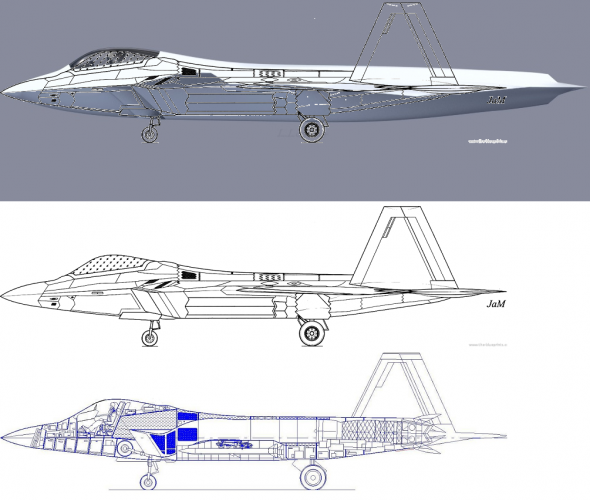
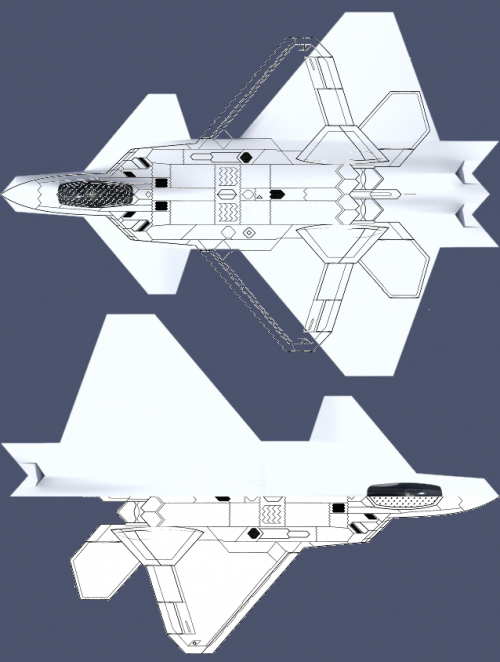
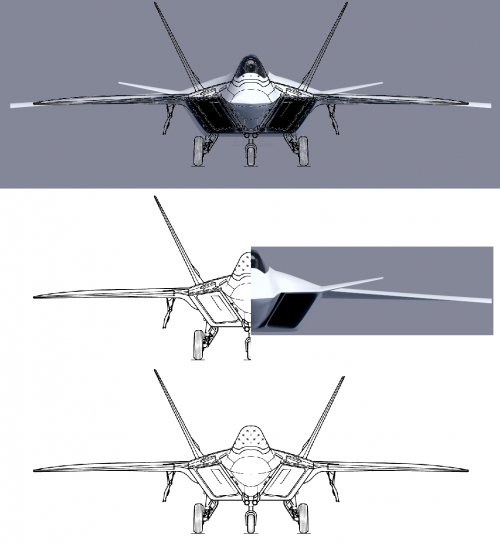
Someone broke the ugly stick on it. I'd give it 0% chance of looking like that. (Of course it is Boeing and they seem to excel at ugly. . .)Not gonna lie, I'm not a big fan of how that would look like:
View attachment 767438
View attachment 767439
View attachment 767440
View attachment 767441
Black Sabre NGAD is an interesting choice of name though, considering one of his previous works was named Deep Sabre.
X-32 spun out of a completely different set of initial requirements than the X-35 did.It somewhat has an air of "running out of ideas stealth", as do many other current projects; as far as ugly goes, X-32 was much more whimsical and weird in that regard (and thus stimulating the imagination) than this. Perhaps a sprinkling of "designed by a committee to fuzzy criteria" as well. If I squint long enough there's some Burnelli in it but that may be just me.
I'm not sure the F-47 has a bigger engine or a lot more fuel.3D CAD models when labeled with dimensions, makes it easy to estimate & compare size.
NGAD should be expected to be bigger than F-22. So, following is comparison with F-22 after comparing cockpit.
F-22 is 62 ft. long & the drawing is quoted at 61 ft. which i don't is possible for a 6gen specs with bigger better engine, more fuel, weapons, equipment.
View attachment 767457
View attachment 767458
View attachment 767459
I can be wrong but in my understanding i don't think F119 sized engine can satisfy NGAD.I'm not sure the F-47 has a bigger engine or a lot more fuel.
The adaptive engines are supposed to be 38% more efficient, and the A102 and A103 are smaller than the F135-sized A100 and A101. Pretty sure everyone is assuming F119 sized, so ~35,000lbs thrust.
With an engine burning that much less fuel, you can get a 1000nmi combat radius relatively easy.
Plus, even the numbers I was rattling around for the FAXX based on catapult and arresting gear limits plus the usual "MTOW is half empty weight" rule of thumb that seems to follow for current fighters were giving me a roughly F-22 sized aircraft that was carrying ~10,000lbs more fuel, a 56% increase in fuel capacity.
To review: 80,000lbs or so MTOW, 55,000lbs trap weight, 40,000lbs empty. FAXX has a roughly 12,000lb weapons load with 4x AGM0158s and 2x AIM-120/AIM-260s, so traps with 3,000lbs of fuel. And 80-55=25, so the beast could have 28,000lbs total fuel onboard. (F-22 fuel load is all of 18,000lbs). 10x AIM-120/AIM-260s is about 4000lbs of weapons, so the beast would launch for a fighter mission at about 72klbs and have a TWR of about 1 at takeoff. The other air-to-air load would be 4x AIM-174s and 2x AIM-120/AIM-260s and would weigh in at about 9000lbs, those AIM-174s are heavy.I was absolutely not expecting that result, to be honest, I was expecting FAXX to be more like 90klbs and NGAD to be pushing 105klbs.
Not gonna lie, I'm not a big fan of how that would look like:
I think the canards may closer to the wing leading edge maybe a diamond wing, I'm not an aero guy and I don't know what the aero ramifications would be but that may make the package more compact with the canards close-coupled?3D CAD models when labeled with dimensions, makes it easy to estimate & compare size.
NGAD should be expected to be bigger than F-22. So, following is comparison with F-22 after comparing cockpit.
F-22 is 62 ft. long & the drawing is quoted at 61 ft. which i don't is possible for a 6gen specs with bigger better engine, more fuel, weapons, equipment.
View attachment 767457
View attachment 767458
View attachment 767459
> Buddy, when the military is being so secretive then what to expect from LINKS?Apologies but does anyone have a link showing the NGAD associated demonstrators were particularly large or massive aircraft? Bc if you read this forum closely enough there are enough breadcrumbs to suggest the Boeing and LM aircraft were actually lighter than Y/F-22….
Don't worry, neither open public forums are meant for aero guys nor they have so much time unless retired.I think the canards may closer to the wing leading edge maybe a diamond wing, I'm not an aero guy and I don't know what the aero ramifications would be but that may make the package more compact with the canards close-coupled?
The XA100 and XA101 were F135-sized. The new engines, A102 and A103, are said to be smaller. Because 2x F135s is honestly too much engine for most twin-engine designs. Anything under 100k MTOW, anyways.I can be wrong but in my understanding i don't think F119 sized engine can satisfy NGAD.
A gen leap is said to have occured when upgrades are not enough or too costly & new airframe is needed.
So something which 5gen cannot do is more internal (weapons + fuel + DEW), that's increase in weight.
To maintain ATWR (Airframe Thrust to Weight Ratio), more thrust is needed.
1 of the ways fuel efficiency would be increased by higher BPR (By Pass Ratio), means additional air channel, means more diameter & weight.
AIM-174s have fins that fold into a ~21" square box natively, because the RIM-174 does and the AIM uses the same fins. All we'd have to add is a way to hold the (spring-loaded) fins closed that will get cut when the missile is launched.New gen jet needs new gen weapons with custom shapes & folding fins, designed for internal bays, like AGM-88G AARGM-ER, JSM, NSM, MAKO, etc. I don't think NGAD would have 860 Kg AIM-174B AAM, at least not w/o folding fins. Instead of big AAM with regular solid fuel rocket motor, a smaller AAM with Ramjet can be used for more range.
That's what I've been thinking for a really long time.So F-22's empty weight is 19.7 tons, MTOW 38 tons.
25-33% increase in weight means NGAD's empty weight would be 25+/- tons & MTOW 45-50 tons.
Slightly more likeable, I guess?Try giving it the longer nose that's on the hand-drawn sketch. I think that the nose looking so stubby really takes away from it.
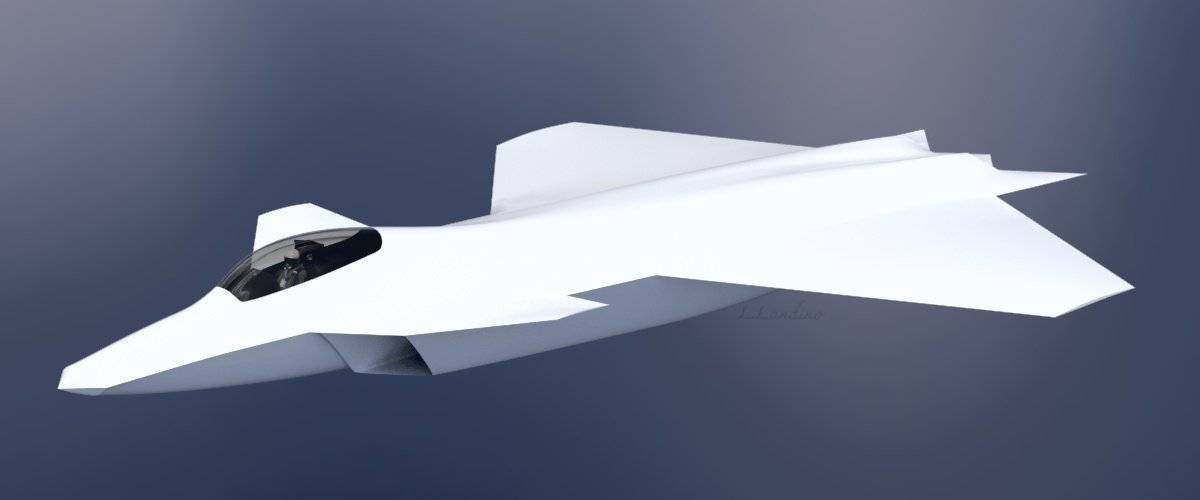
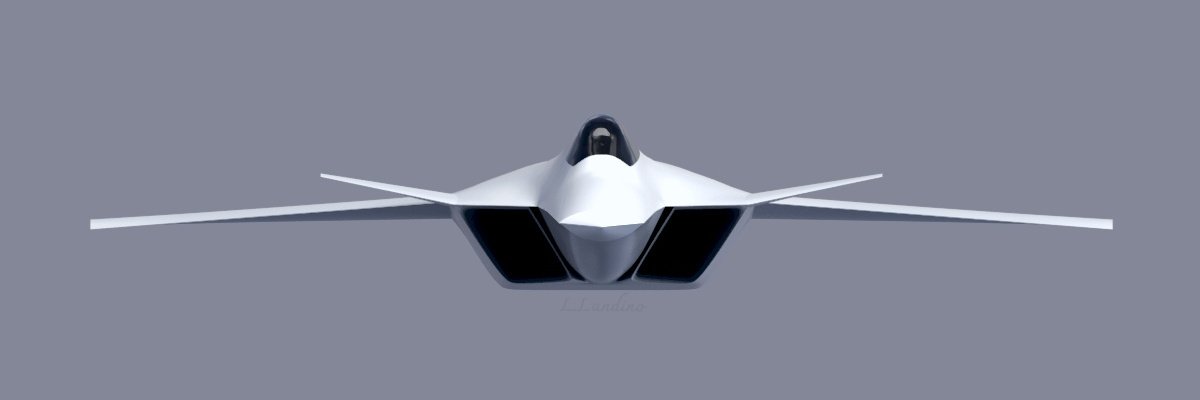
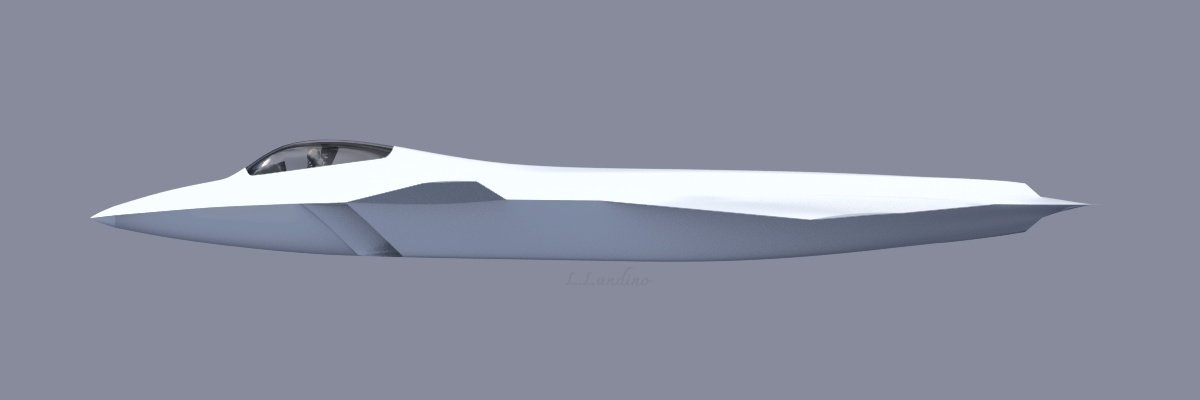
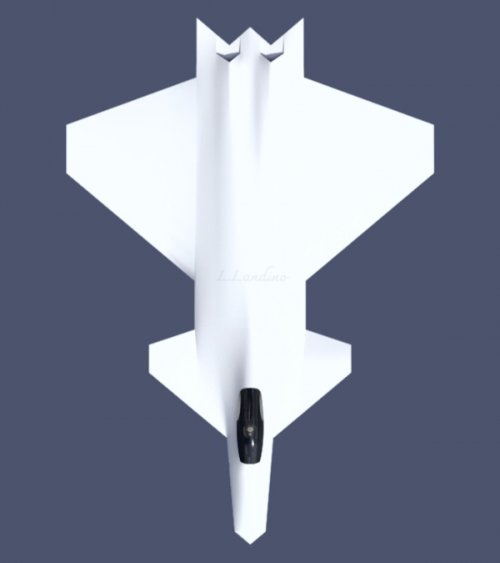
So, not very useful to learn more about Boeing's design, but still interesting to visualize an expert's take on what a NGAD platform could/should look like.Rather than try to deduce the F-47’s design directly from heavily redacted images, Cummings chose to develop his own configuration
It would be reasonable to expect, but would it be true?Apologies but does anyone have a link showing the NGAD associated demonstrators were particularly large or massive aircraft? Bc if you read this forum closely enough there are enough breadcrumbs to suggest the Boeing and LM aircraft were actually lighter than Y/F-22….
Exactly.We can either start searching for things a bit deeper (but that takes a lot of time and effort and there is a very likely a chance to not find what we'd like to know) or limit ourselves to make educated guesses and cultivate patience in the meantime.
Yeah, that does looks a lot better. Thanks.Slightly more likeable, I guess?
View attachment 767512
View attachment 767513View attachment 767514
View attachment 767515
It's a mixture between a F-22 (cockpit and nose when seen from the sides, intakes, angles for the wings), X-36 (canard configuration) and YF-23 (general wing shape).
Besides the fact that it has canards, there really isn't anything much in common with the F-47 renders released by the Air Force, but that was already stated in the AW article by both Warwick and Cummings himself:
So, not very useful to learn more about Boeing's design, but still interesting to visualize an expert's take on what a NGAD platform could/should look like.
Yes XA-100/1 based AETP was proposed for F-35 but only core-upgrade happening.The XA100 and XA101 were F135-sized.
The new engines, A102 and A103, are said to be smaller.
Because 2x F135s is honestly too much engine for most twin-engine designs. Anything under 100k MTOW, anyways.
Yes but more BPR means more diameter/weight which remains constant.The adaptive engines are able to vary their BPR.
Yes, but if bigger IWB & more fuel +DEW are needed then at least i don't see a 2-engine NGAD smaller than or size of F-22, nor its engine same size.And as I've pointed out, ~35,000lbs per engine (F119 class) is perfectly acceptable for a roughly F-22-sized airframe of 80-85klbs MTOW.
If you expect NGAD to carry AIM-174B AAM, but F-22 can't fit it, then NGAD has to be bigger than F-22 & so does its engines, simple.AIM-174s have fins that fold into a ~21" square box natively, because the RIM-174 does and the AIM uses the same fins. All we'd have to add is a way to hold the (spring-loaded) fins closed that will get cut when the missile is launched.
While the base 2000lb JDAM fits into an 18" square box, I think the -ER Wing kit adds enough bulk to make it 21" deep.
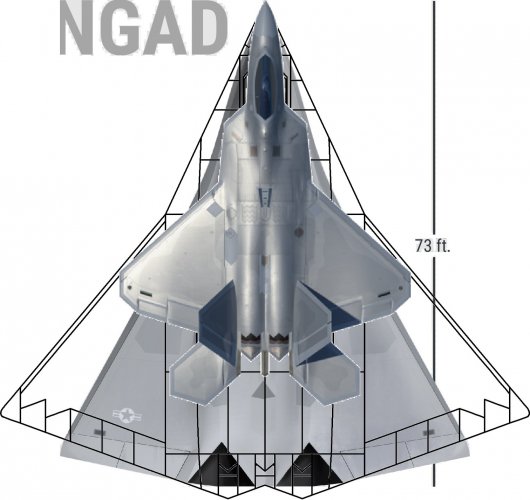
I'm talking about size/volume/weight of airframe & in same TWR ratio the size of the VCE through its inlet dia.That's what I've been thinking for a really long time.
But I had it pointed out that it's not necessarily the case. The Adaptive engines make a HUGE difference in combat range!
40,000lbs empty weight for an 80k MTOW with 28,000lbs of fuel (which is already 56% more than the F22 carries). Plus an engine that is 38% more fuel efficient. F-22 subsonic combat range is 595nmi. More fuel alone gets us to ~760nmi, more efficient engines gets us to ~1000nmi combat range.
And that's assuming the same combat mission profile as the F-22, including massive maneuvering.
I would love it if that 73 foot design was NGAD. But I'd think you'd need F135 level of thrust and supposedly the NGAP engines are more in the F119 thrust range.Yes XA-100/1 based AETP was proposed for F-35 but only core-upgrade happening.
But IDK if military has disclosed NGAD engine details. Until then it is all speculation by journalists & enthusiasts.
When they're not revealling the airframe properly then how engine details will come out?
R&D needs testing many combos, so who knows, may be there are A104/105 engines too, the real ones for NGAD. Time wil tell soon.
For us civillians it is very dificult to correlate thrust with engine size/weight. Although there are Engine related equations which can be solved to arrive at its dimensions in theory.
The easiest observation we see is that 2 engines means 2x thust, 2x area of intake/duct/inlet, 2x engine volune/weight.
So if NGAD over F-22 wanna have say 50% more of eveything - 12 AAMs over 8 AAMs, 12.3 tons fuel over 8.2 tons, overall IWB capacity 50% more, etc, then for same dry/wet ATWR of 0.8/1.1 the NGAD engine will have 50% more thrust, volume, weight, inlet area. So if engine length is same then the radius/diameter increase by sq.rt.(1.5)=1.2247 times or 22.47%.
NOTE - By just increasing width/raidus/dia./BPR of engine the thrust can be increased, but not just by increasing engine length, unless more compressor stages need more length & result in more OPR, TET & exit velocity.
Yes but more BPR means more diameter/weight which remains constant.
Yes, but if bigger IWB & more fuel +DEW are needed then at least i don't see a 2-engine NGAD smaller than or size of F-22, nor its engine same size.
If you expect NGAD to carry AIM-174B AAM, but F-22 can't fit it, then NGAD has to be bigger than F-22 & so does its engines, simple.
IDK any official comment on type, size of weapons NGAD will carry.
But merits/demerits have to be compared of what is better to increase missile range - bigger size/weight with more solid fuel or small size/weight with Ramjet.
Bigger size with more solid fuel will make NGAD's IWB like J-36, so we can imagine NGAD's size between F-22 & J-36. It also means bigger engines.
AIM-174B might be just an experiment &/or for legacy jets. But AIM-260 JATM, LREW, etc size might be b/w AIM-120 AMRAAM & AIM-174B.
Also, hypersonic AAMs & AGMs are also R&Ded.
Anyways, I stacked F-22 with J-36 diagram & 1 of the early notional NGAD which looks like this:
View attachment 767517
All the 3D artists should always produce comparion with F-22 at least & some other future concepts.
They should also produce 3D models showing the weapons with IWB, which very few artists do.
I'm talking about size/volume/weight of airframe & in same TWR ratio the size of the VCE through its intel dia.
50% more airframe volume/weight -> 50% more total thrust -> 50% more engine volume & inlet area (air mass flow) -> 22.47% more inlet dia. with same length, in theory.
But you're connecting VCEs subsonic range, that's separate thing bcoz range depends on total thrust (1 or 2 engine), altitude/air-density & airframe shaping (lift, drag). Same engine can be used in many designs with different ranges.
And fuel consumption to achieve certain thrust would depend on OPR, BPR, fuel type, fuel-air mix ratio, combustor design, turbine blade & vane layout, etc.
No buddy, i wrote in Bold Red that F-47 could be somewhere b/w F-22 & J-36, not as big as J-36.I would love it if that 73 foot design was NGAD. But I'd think you'd need F135 level of thrust and supposedly the NGAP engines are more in the F119 thrust range.
so we can imagine NGAD's size between F-22 & J-36.
Just that it was apparently scaled down from the 3-stream they were designing for the F-35.No buddy, i wrote in Bold Red that F-47 could be somewhere b/w F-22 & J-36, not as big as J-36.
Do we have any official statement by GE, P&W, USAF on NGAD engine specs?
1st we should decide desired quantity & size of weapons, fuel, aux-equipments. That'll give idea on airframe size. Then that'll give idea of total thrust & engine size.Just that it was apparently scaled down from the 3-stream they were designing for the F-35.
My comment was based on the picture you posted. Nothing else.1st we should decide desired quantity & size of weapons, fuel, aux-equipments. That'll give idea on airframe size. Then that'll give idea of total thrust & engine size.
So someone please list AA, AG, Mixed config of weapons 1st, size the IWB, SWB.
Then guess further.
The probable loadout for NGAD is on the order of 8+2 AAMs, if they're keeping the Sidewinder bays from F-22. If they make the bays deeper they could pack in 2000lb class weapons and/or stack AMRAAMs 2 deep. With CCAs, the thinking seems to be that NGAD will not require as many weapons itself.1st we should decide desired quantity & size of weapons, fuel, aux-equipments. That'll give idea on airframe size. Then that'll give idea of total thrust & engine size.
So someone please list AA, AG, Mixed config of weapons 1st, size the IWB, SWB.
Then guess further.
Those of us who can't make 3D CAD, should improvise & use existing diagrams & scale their pixels in MS Paint like tool to depict the ideas.The probable loadout for NGAD is on the order of 8+2 AAMs, if they're keeping the Sidewinder bays from F-22. If they make the bays deeper they could pack in 2000lb class weapons and/or stack AMRAAMs 2 deep. With CCAs, the thinking seems to be that NGAD will not require as many weapons itself.
I've already run through the logic for FAXX having two bays able to hold AMRAAM-sized weapons on the sides and 2 bays each ~65" wide and 25" deep, 16.5ft long to be able to hold AIM174s for length and 2x AGM-158s for width. Plus the catapult and arresting gear limits on weight that produce a 40,000lb empty aircraft.
Let's see here... AMRAAM C-5 wingspan is 19", so they fit in a ~14" square box (and can be packed tighter than bombs thanks to the skinny fuselage). The 16ft long bay allows us to stagger for length to give more fin-tip clearance, so each 65" wide 25" deep bay can hold 10x AMRAAMs packing tight. That makes for a total of 22x AMRAAMs all told. Or 2x AIM174s and 12x AMRAAMs (AIM-174s in one bay, AMRAAMs in the other). Or if we loose pack, 8x AMRAAMs per bay, 18x AMRAAMs total, and now we can put an AIM174 into the same bay as 4x AMRAAMs. And I'm kinda leaning towards the looser pack, since that way allows you to have a rack of 4x AMRAAMs that you can lock onto the same points as the two AGM158s or AIM174s.
And I've already explained how an aircraft with 28,000lbs of fuel onboard can have a 1000nmi combat radius.
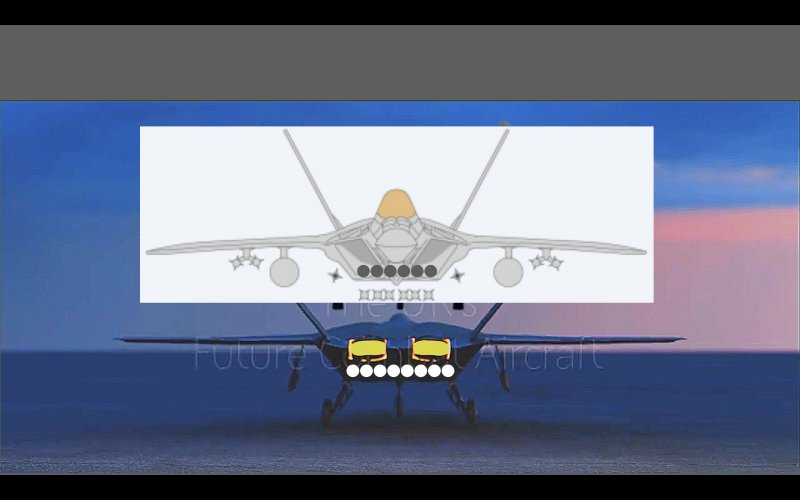
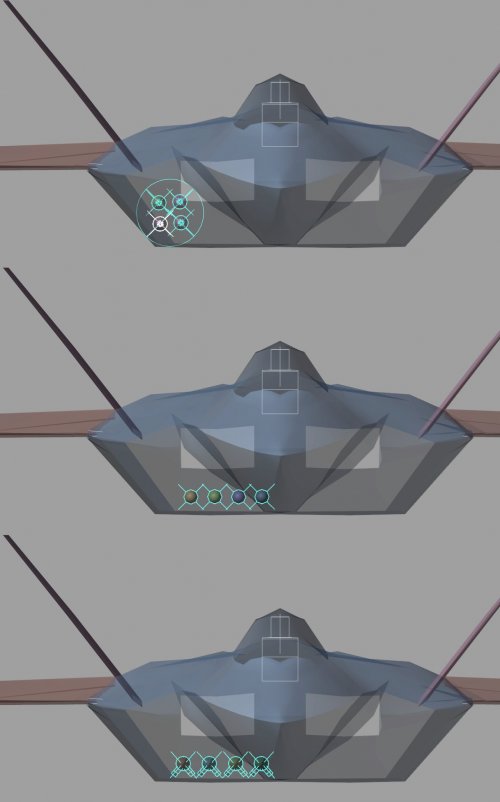
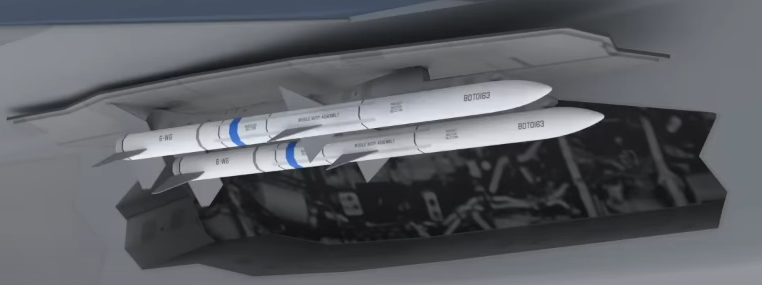
Doesn't that run into the same problems the YF-23 missile bay design had? If your ejector malfunctions you've blocked part of your remaining missiles too.Stacked two deep and 4 or 5 wide per bay.
My computer isn't up to farting around in even MSPaint (or rather, the equivalent for Ubuntu).
Edit: So ASCII it is.
x XXXX XXXX x
...XXXX XXXX (periods for spacing, forum did not show leading spaces)
Come on man! My laptop is 17yo. You can use color drawing tool in late 1990s PC also.My computer isn't up to farting around in even MSPaint (or rather, the equivalent for Ubuntu).
Edit: So ASCII it is.
x XXXX XXXX x
...XXXX XXXX (periods for spacing, forum did not show leading spaces)
Stating incomplete concept or drawing is easy. Vertical stack for bombs & missiles have different considerations bcoz their dimension ratio & falling/separation aerodynamics & angles are different. Hence dropping & launching are different.Stacked two deep and 4 or 5 wide per bay.
Yes, it would, but that's why they're only 2 deep. If an ejector malfs, you only have 2 missiles out of action.Doesn't that run into the same problems the YF-23 missile bay design had? If your ejector malfunctions you've blocked part of your remaining missiles too.
Granted, though the YF23 had a vertical stack for missiles. That I think was even demonstrated.Stating incomplete concept or drawing is easy. Vertical stack for bombs & missiles have different considerations bcoz their dimension ratio & falling/separation aerodynamics & angles are different. Hence dropping & launching are different.
AFAIK, the current bombers have vertical stack for bombs, but for missiles is yet to be seen.
If I am remembering correctly a solution would be to blow out pyrotechnic fasteners to separate the linkage from the piston, thus allowing the projectile to be effectively forced out. I could be way off though.Doesn't that run into the same problems the YF-23 missile bay design had? If your ejector malfunctions you've blocked part of your remaining missiles too.
